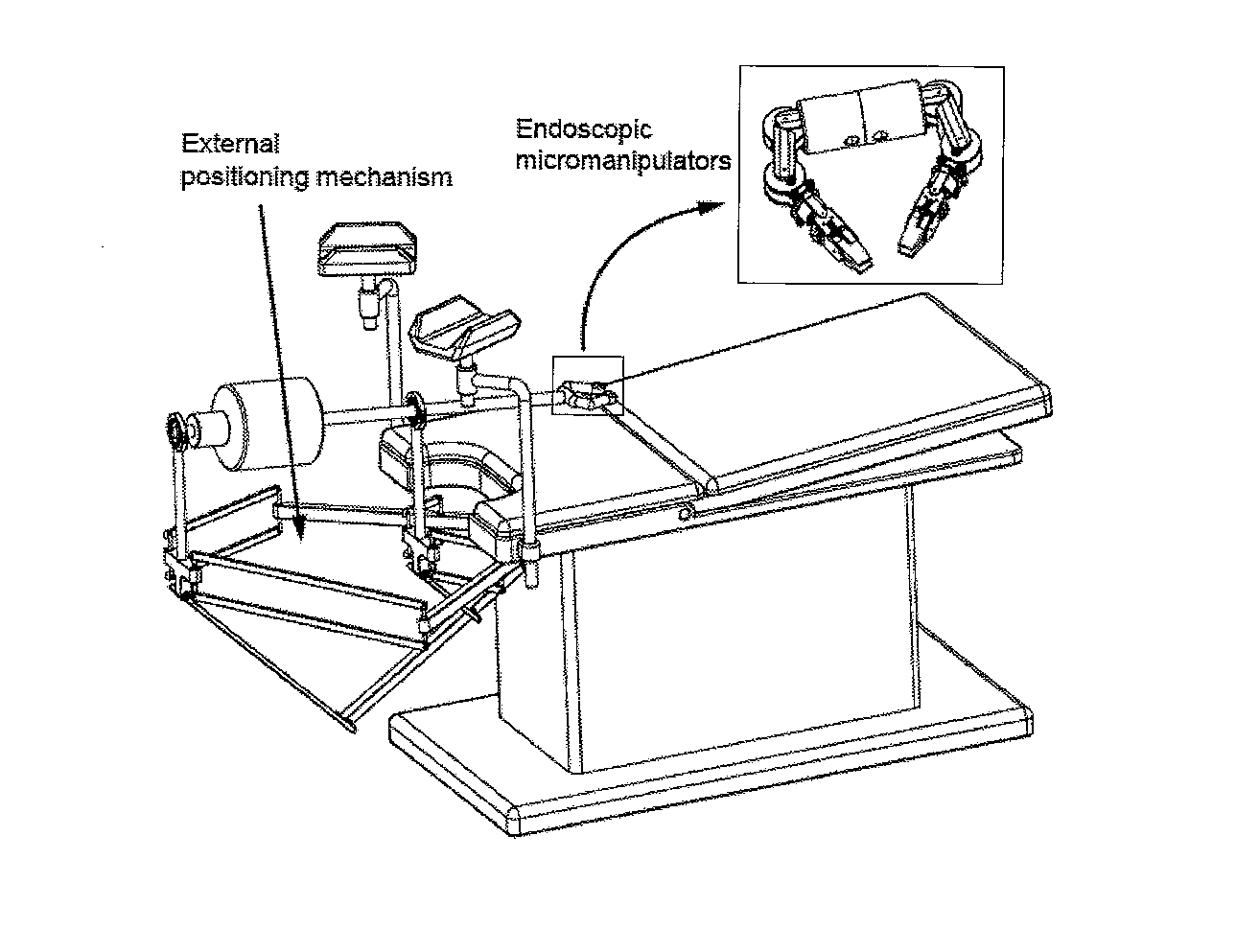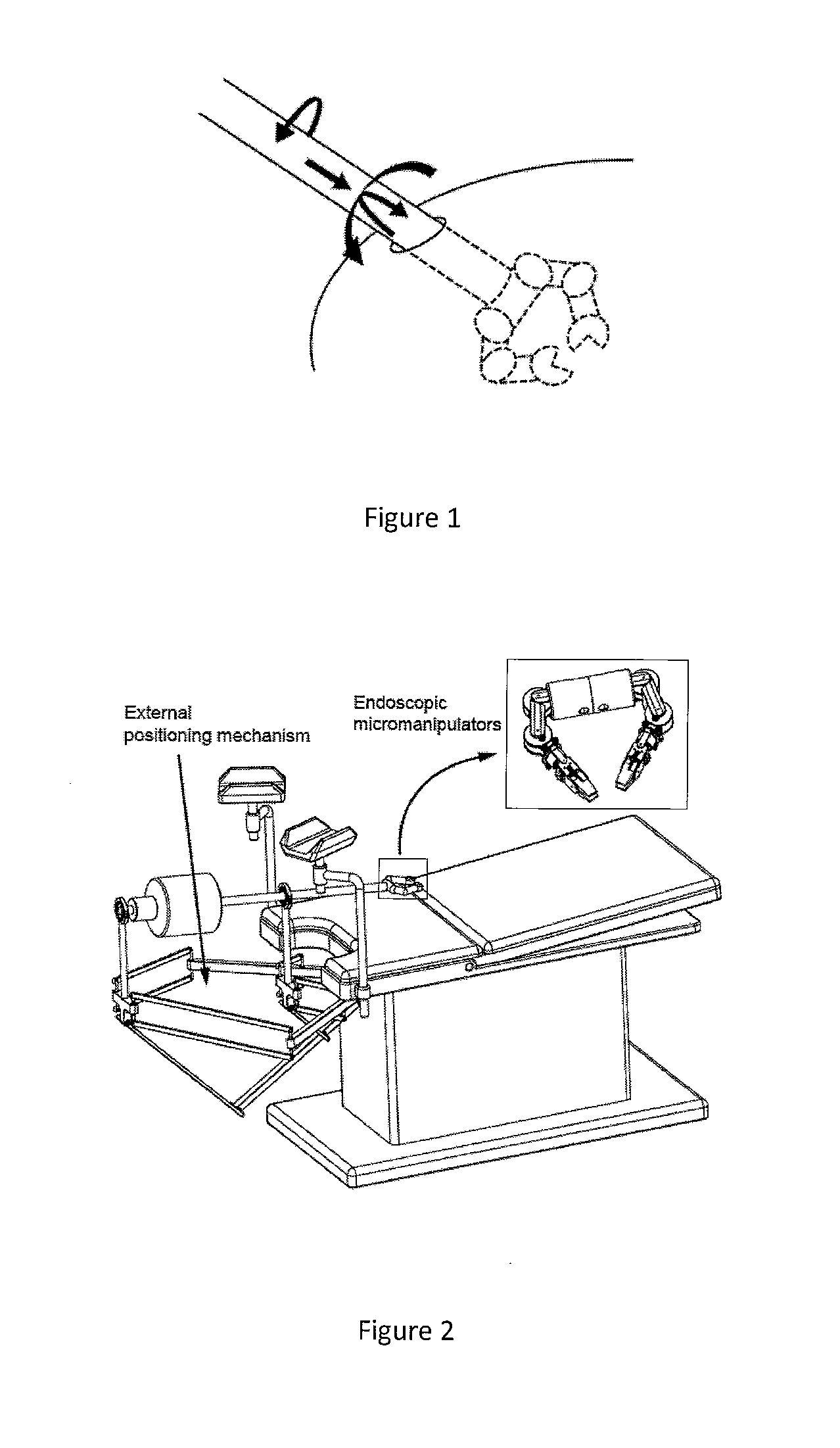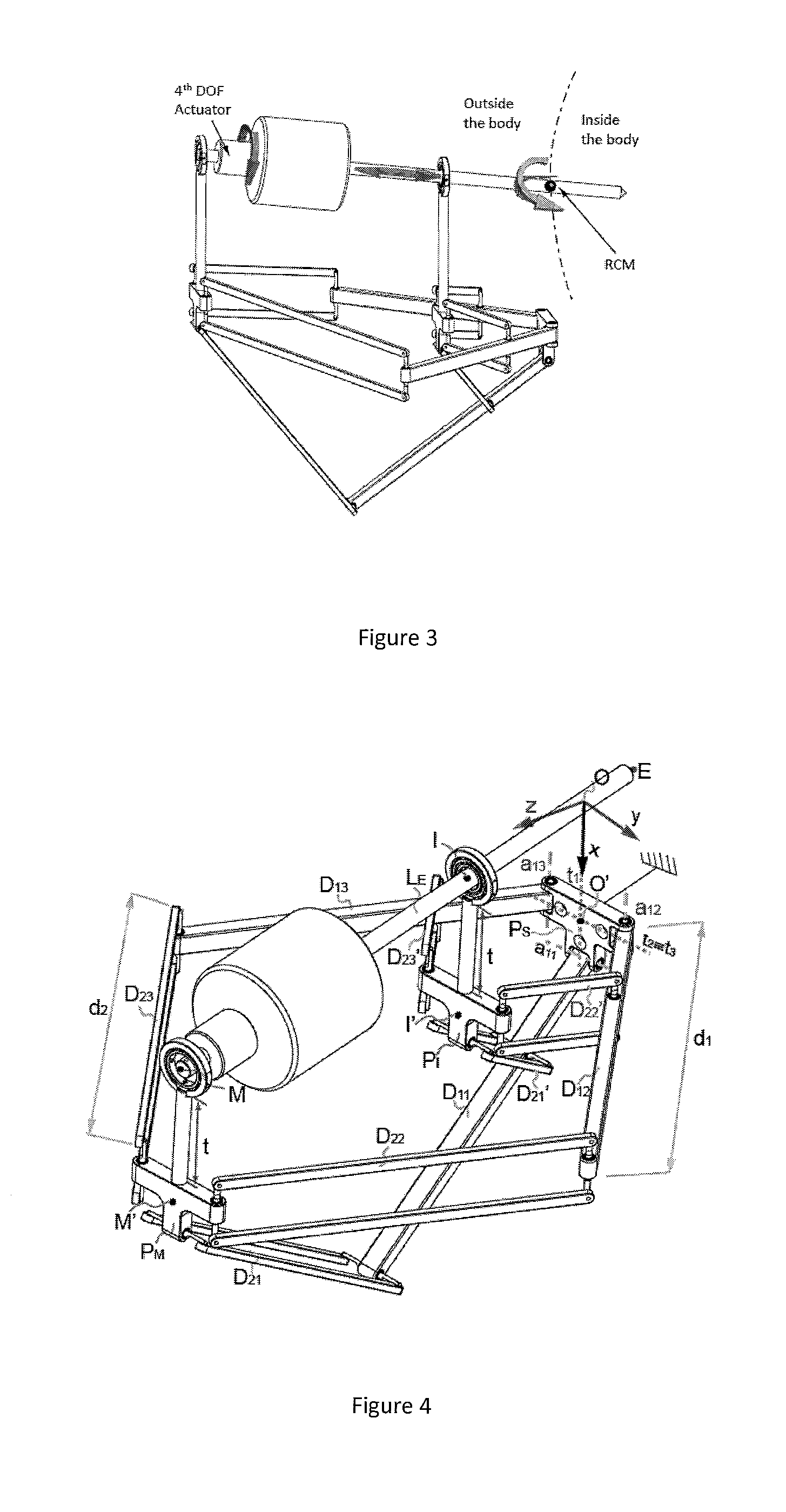Mechanical positioning system for surgical instruments
a positioning system and surgical instrument technology, applied in the field of external manipulators, can solve the problems of voluminous current surgical robots, non-ergonomic, non-intuitive, and inability to provide adequate visual and tactile feedback, and achieve the effect of sufficient dexterity and precision
- Summary
- Abstract
- Description
- Claims
- Application Information
AI Technical Summary
Benefits of technology
Problems solved by technology
Method used
Image
Examples
Embodiment Construction
[0054]The present invention will be better understood by a detailed description of several embodiments therefrom and by reference to the following drawings in which
[0055]FIG. 1 illustrates a conceptual representation of a surgical platform;
[0056]FIG. 2 illustrates a conceptual design of the complete surgical platform;
[0057]FIG. 3 illustrates degrees of freedom of an external manipulator;
[0058]FIG. 4 illustrates external manipulator schematics;
[0059]FIG. 5 illustrates limb schematics;
[0060]FIG. 6 illustrates the Intercept Theorem;
[0061]FIG. 7 illustrates a 2D representation of manipulator kinematics;
[0062]FIG. 8 illustrates examples of potential working configurations for the external manipulator;
[0063]FIG. 9 illustrates a kinematic structure of the external manipulator
[0064]FIG. 10 illustrates examples of singular configurations;
[0065]FIG. 11 illustrates profiles generating the nth limb workspace;
[0066]FIG. 12 illustrates workspace surfaces for each limb;
[0067]FIG. 13 illustrates a ...
PUM
 Login to View More
Login to View More Abstract
Description
Claims
Application Information
 Login to View More
Login to View More - R&D
- Intellectual Property
- Life Sciences
- Materials
- Tech Scout
- Unparalleled Data Quality
- Higher Quality Content
- 60% Fewer Hallucinations
Browse by: Latest US Patents, China's latest patents, Technical Efficacy Thesaurus, Application Domain, Technology Topic, Popular Technical Reports.
© 2025 PatSnap. All rights reserved.Legal|Privacy policy|Modern Slavery Act Transparency Statement|Sitemap|About US| Contact US: help@patsnap.com



